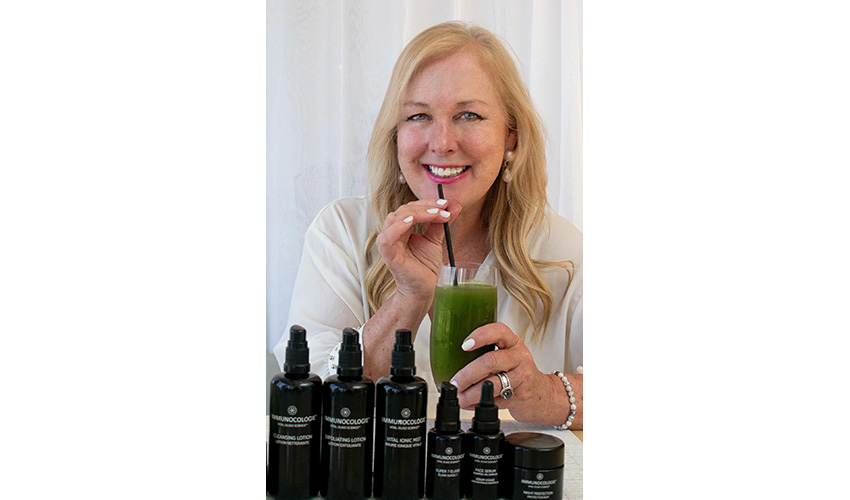Biomimetic dentistry is a branch of restorative dentistry that uses treatments to maintain and save the natural tooth structure using materials that mimic your natural teeth. Biomimetic dentists actively work to avoid damaging the tooth structure with certain procedures.
Like biological dentistry, biomimetic dentistry avoids using toxic materials to treat dental problems. Biomimetic dentistry uses biocompatible methods and materials to treat tooth decay and dental caries (cavities).
What Is A Biomimetic Approach?
The biomimetic approach focuses on preserving the structure and function of your natural teeth first and foremost. There is a large emphasis on preserving healthy tooth structure, and biomimetic dentists actively save as much of the tooth as possible when restoring teeth.
Instead of drilling and removing decayed tooth material, biomimetic dentists work to treat and preserve the tooth that you still have. For example, instead of drilling out a crack in a tooth, they’ll sterilize it and fill it with a composite material to protect it from further damage and decay.
Biomimetic restorations also feel like natural teeth. Biomimetic dentists work to mimic nature as much as possible, including making the look and feel of their treatments as natural as possible. They use materials that replicate natural enamel and dentin as much as possible.
What is the biomimetic dental procedure? A biomimetic dental procedure is any dental procedure that preserves as much of your natural tooth as possible using tooth-like materials.
Traditional Vs. Biomimetic Dentistry
According to the Academy of Biomimetic Dentistry, the biomimetic approach is less invasive than the traditional approach. There’s less drilling involved — in fact, biomimetic dentists avoid using dental drills whenever possible and use other methods to sanitize teeth and treat decay.
Biomimetic dentistry focuses on rebuilding teeth, simulating the natural dentition as much as possible. Cavities and other lesions to the tooth are carefully repaired using advanced materials and adhesives so the tooth retains its inherent natural properties.
Traditional dentistry is much more invasive dentistry. Tooth tissues are commonly removed in traditional dentistry, and many of the restorative materials traditional dentists use to repair teeth are harder than natural teeth, which can result in shrinkage and cracked or damaged teeth.
Concepts In Biomimetic Dentistry
Biomimetic dentists have a common goal to conserve their patients’ teeth in as natural a state as possible. They practice tooth-conserving dentistry using several biomimetic techniques, including removing as little actual tooth tissue as possible when treating cavities and infections.
Conserving More Dental Pulp
Traditional dentistry and endodontics use root canal treatments to remove dental pulp and replace it with a material called gutta-percha. Traditional root canals leave teeth more susceptible to cracking and breaking because the gutta-percha isn’t as pliable as natural pulp.
Biomimetic dentistry works to repair natural pulp first and foremost, instead of removing it like traditional dentistry. They use natural methods to fight the bacterial invasion, including ozone therapy, preserving stem cells that can regrow and repair the pulp.
Through the biomimetic approach, patients can actually avoid needing a root canal because more of the natural tooth is repaired and preserved.
Pathology Removal
Traditional dentistry follows a drill and fill approach. Whenever a traditional dentist finds tooth decay, they’re trained to remove a lot of the natural tooth, including some healthy tooth tissue, to place a filling.
The materials used to repair cavities are also different. Traditional dentists have used amalgam to fill cavities, but biomimetic dentistry uses tooth-like composites for fillings and dental restorations.
What is a biomimetic filling? A biomimetic filling is a cavity filling that replaces the natural tooth with materials that closely mimic the mechanical properties of natural dentin and enamel.
How long do biomimetic fillings last? Biomimetic fillings last just as long as traditional fillings, and often longer. Biomimetic fillings that are properly applied should last a lifetime.
What is the difference between a biomimetic filling and a composite filling? The difference between a biomimetic filling and a composite filling is the materials used and how they’re applied. Biomimetic fillings use materials that resemble natural teeth applied slowly in layers.
Saving And Strengthening Tooth Structure
Biomimetic dentists work hard to repair teeth using materials that mimic and match the strength of natural teeth. Large cavities are filled with ceramic inlays or onlays with cusps that are just as strong as your natural enamel and look natural, too.
These restorative techniques also use materials with good bond strength so fillings and other restorations stay on the tooth for up to a lifetime. Some traditional fillings need to be redone in a few years, removing even more healthy tooth tissue in the process.
Delaying Further Treatment Or Re-treatment
One hallmark of biomimetic dentistry is the delay of additional treatment or re-treatment. In some cases, putting off additional treatments can give the teeth time to heal.
For example, inflammation of the dental pulp can be reversible, depending on what’s causing the inflammation. Instead of a root canal, the best treatment could be to give the pulp the time it needs to heal itself.
By delaying treatment under the supervision of a biomimetic dentist, you’ll retain more of your natural tooth, and you can avoid unnecessary painful dental procedures. (Delaying dental care without consulting a dentist can be dangerous and can lead to life-threatening infections.)
Benefits of Biomimetic Dentistry
There are many upsides to working with a biological dentist.
The benefits of biomimetic dentistry include:
- Avoiding the use of toxic chemicals in your mouth
- Preserving more of your natural teeth, which helps you eat and speak naturally
- Use of materials that function like your teeth, which can keep the rest of your tooth healthy and promote oral health
- Minimally invasive treatments that can reduce the need for anesthesia
- Less invasive treatments also usually cost less, saving you money
- Esthetically-pleasing (good looking) restorations that look and feel like your own teeth
What are the risks of biomimetic dentistry? The risks of biomimetic dentistry include further tooth decay and a potential need to have a filling or other dental procedure redone.
Materials Used In Biomimetic Dentistry
One of the qualities that makes biomimetic dentistry unique is the materials dentists use to restore damage to teeth. Biomimetic materials have excellent retention, and they more closely resemble your natural teeth than many materials used by traditional dentists.
Some of the most popular materials used in biomimetic dentistry include:
- Calcium phosphate hydroxyapatite: Hydroxyapatite ceramics are used to create inlays, onlays, and crowns. Your natural teeth are made of hydroxyapatite, so these ceramics can be an ideal choice to replace decayed enamel.
- Alumina: Alumina (aluminum oxide) ceramics are very strong, and they’re also biocompatible, which means they readily fuse with your body’s tissues.
- Glass ionomer cements: These cements are similar to dentin in hardness, and they do a very good job of sticking to the natural tooth. That means you won’t have to worry about your filling falling out, and your fillings should last a lifetime.
Healthy Teeth Need High-Quality Care
To keep your natural teeth healthy, look no further than Rejuv. Our dental practice remains committed to top-quality dental care and keeping your teeth as healthy as possible. Maintaining your oral health with preventive care will preserve your overall health, too.
As biological dentists, we use many biomimetic materials in our practice, including our zirconia dental implants, crowns, and bridges. We also use minimally-invasive natural treatments for oral health issues that don’t involve the teeth, like jaw pain from TMJ.
We would love to talk to you about our natural dental care practices using non-toxic materials. Click here to schedule an appointment at our Manhattan or East Hampton offices. We look forward to giving your mouth the gentle treatment and care you deserve.




